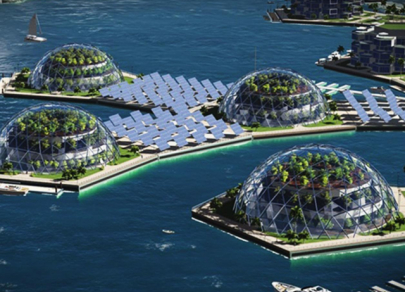FX.co ★ Cities of future: 7 floating arks
Cities of future: 7 floating arks
Ocean Spiral underwater city
Experts consider the spiral-shaped Ocean Spiral to be the most original version of the hydropolis. According to its developer, the Japanese company Shimizu, this underwater city will capitalise on infinite possibilities of the deep sea. Ocean Spiral has higher oxygen concentration and minimal temperature fluctuations. The hydropolis is able to protect people from typhoons and earthquakes. Besides, it is possible to mine resources from the seabed and the ocean. The main body of Ocean Spiral with residential zones, recreation areas, and a research center is located in a spherical structure connected to a spiral path that winds its way to the ocean floor. The completely autonomous city is set to be constructed by 2035.
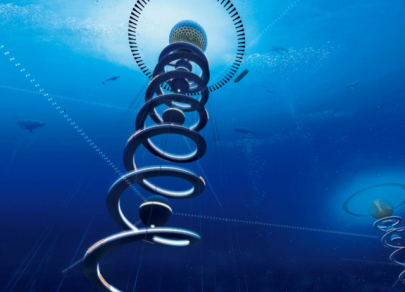
Eco Atlantis floating metropolis
This floating city to be built with the help of new technologies is a unique development of AT Design Office. The city is planned to be constructed near Lagos, Nigeria. Eco Atlantis consists of two segments - surface and underwater. The above-water part will house green areas, as well as a network of intercity pathways, tunnels, and canals. The city will also include its own farm, an incubator station, and a waste recycling centre.

City of Meriens
This floating city of the future was designed by French architects. The City of Meriens looks like a stingray, which provides sustainability, stability, and resistance to severe weather conditions. The hydropolis, where up to 7,000 humans can live, includes residential zones, laboratories, classrooms, as well as recreation and sports areas. The above-water part of the City of Meriens has a height of 60 meters, while the lower part is about 120 meters. The center of the building features a large lagoon for research ships. On the "wings" of the stingray, there are hydroponic greenhouses for growing fruits and vegetables. Besides, the developers emphasize that the city is set to be completely autonomous.

Harvest City
This seemingly simple but effective innovation belongs to British architect E. Kevin Schopfer. The hydropolis project is capable of accommodating 30 thousand people. Its circle-shaped design with a diameter of 3 km is able to reliably protect the building from typhoons and hurricanes. The hydropolis consists of four blocks - floating modules connected to one another via a system of canals. Over 60% of the Harvest City's area is devoted to crop planting, while the rest of the area - to light industry enterprises.
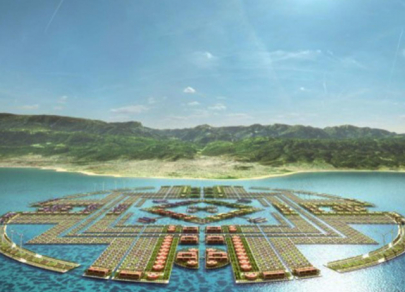
Wayaland Floating Pyramids City
The author of this project is Pierpaolo Lazzarini, an Italian designer. Wayaland is a hydropolis made up of the modular pyramids of various shapes (residential zones, hotels, shops, and others). The floating modules are anchored into position which can be easily adjustable by the lower mounted engines. The above-water zone holds a large entrance for boats, while the underwater part has everything essential to life (equipment, generators, etc.). Each pyramid has a self-contained power supply.
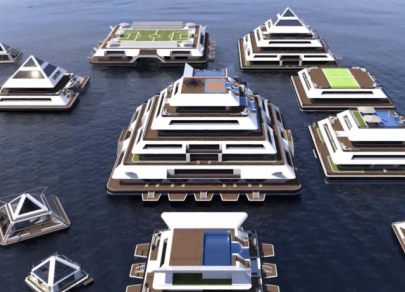
Oceanix City
A compact and functional project for the hydropolis of the future was presented by CEO of Oceanix Marc Collins at the UN high-level roundtable on floating cities in 2019. This city capable of accommodating 10 thousand people is resistant to any climate changes. The Oceanix City project was originally intended to be constructed in sub-tropical and tropical areas but was later improved. The city is a modular autonomous territory with living and working areas. The seven-story hydropolis has biofarms and constructions for ecosystem regeneration.
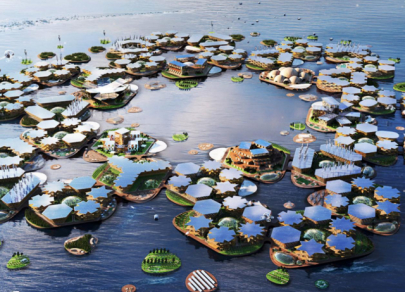
Artisanopolis
This project developed by three French architects won the Seasteading Institude's design contest in 2015. The hydropolis is composed of several platforms in the form of rectangles and pentagons connected by double locks. These platforms can be swapped and built in any configuration. The diving depth of Artisanopolis can be adjusted. The hydropolis is able to generate its own electricity with the help of photovoltaic panels. In addition, it is equipped with desalination plants and waste recycling systems.
